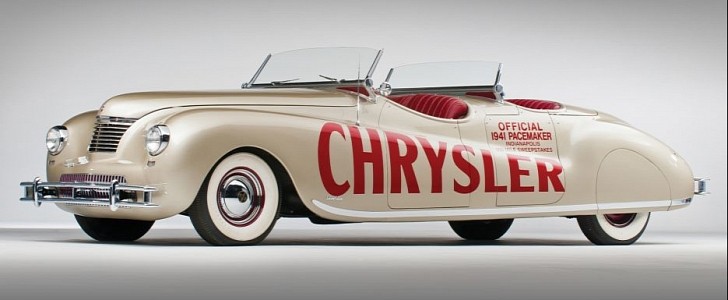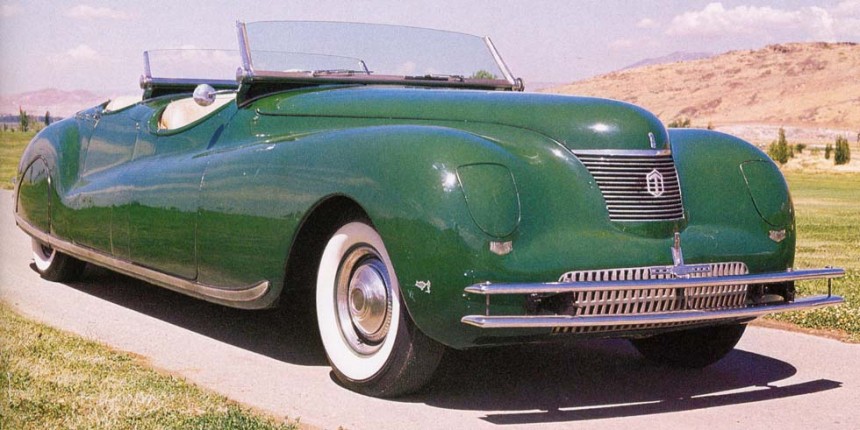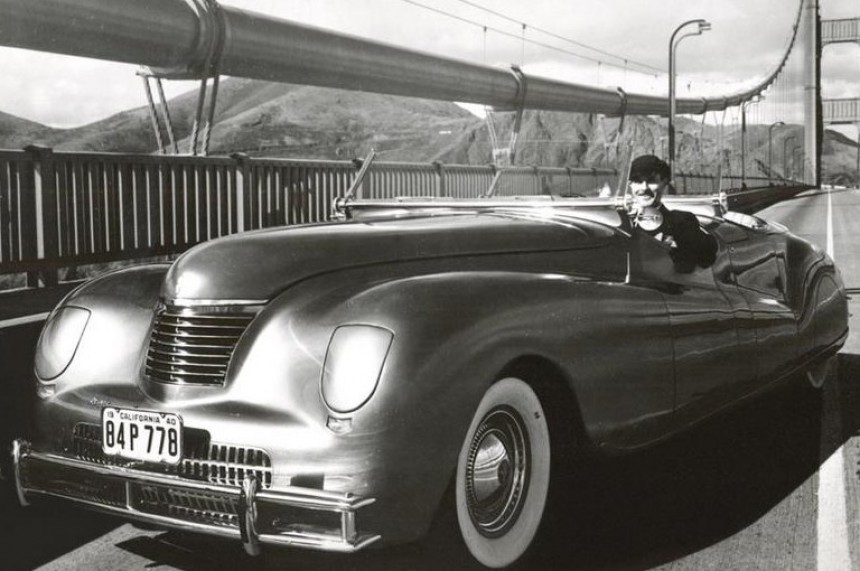You wouldn't know it from their ancient and wholly outclassed lineup today, but Chrysler used to be a quality American automaker. Before the pencil pushers, accountants, and later international collaborators robbed them of their intellect and their pride, Chrysler was actually ahead of the curve in some aspects.
Such is the story of the 1941 Chrysler Newport Phaeton. A limited-production dual cowl drop-top that dazzled audiences at the Indianapolis 500 nearly a century ago. Sadly, it faded into obscurity as Chrysler slowly but surely crept down the path to self-destruction that'd keep spiraling for decades until reaching the point of near-death in the late in both the mid-1980s and late 2000s.
After seeing how the Newport Phaeton concept panned out, you'll be able to see why Chrysler never again, even in the muscle car era, reached such high peaks. In many respects, the Newport Phaeton was America's very last great car before the start of the Second World War. It was a product of the very same advancements in the understanding of aeronautics that allowed biplanes to evolve into single-wing monoplanes that'd go off to fight in that very same war.
The body was constructed by a little-remembered custom coachbuilder based out of New York City called LeBaron / Briggs Manufacturing Company. It was a project spearheaded by one of the company's lead designers, a man by the name of Ralph Roberts. From the very first glance at this Newport Phaeton from virgin eyes lets, you know immediately that it was designed in a wind tunnel.
Chrysler had only recently perfected the art of wind tunnel automotive testing. The curved, smooth, sculpted lines that make up all 145.5 in (3,696 mm) length of this machine seem to have been inspired by a perfectly crafted laminar flow wing, a trademark characteristic of Second World War fighter planes like the North American P-51 Mustang, also under development around 1941.
Alongside its sister car, the Thunderbolt, the Newport platform represented the pinnacle of what Chrysler was capable of in the early 1940s. A time when Cadillac and Bentley ruled the roads in the luxury car segment but were undoubtedly peppered with other international automakers that had reason to catch people's attention. Powering the first-generation Newport was what we can only describe as the Mopar 5.7 HEMI of its day.
The 323.5-cubic inch (5.3-liter) Chrysler Flathead Straight Eight, or the Spitfire, as it was dubbed by the people who developed it. Underneath, the rear suspension sports a solid rear axle with a set of semi-elliptical leaf springs alongside a sophisticated coil spring with shocks system that's the closest thing to a set of coilovers you're likely to find in pre-war America.
It's backed up by power-boosted drum brakes at all four corners. Not exactly cutting-edge tech, but good enough for the 1940s. With a four-speed automatic transmission on offer, this was a car more so built for long-distance continent crushing rather than precision circuit track racing.
Not that any of this was a hindrance to its appeal at the 1941 Indianapolis 500. Coincidentally, that year's event was the last held before America entered World War II. It was also the last to be organized by WWI fighter ace and then president of the Indianapolis Motor Speedway, Eddie Rickenbacker.
This particular pace car model, chassis number C7807503, had one or two quirks other examples didn't. Chief among these were the non-concealed headlamps. All others had one of the very first flip-around headlight systems fitted to an American car. After the race, which Lou More of Oklahoma won, the car became the personal property of Walter Chrysler Jr., the son of Chrysler's founder Walter Chrysler Sr.
To have been a backseat passenger in the Newport Phaeton's separate rear seating cowl with Mr. Chrysler at the wheel must've been a privilege not many were ever able to experience. This one-of-a-kind Indy 500 special edition Newport Phaeton would go on to cross the auction block at RM's 2012 Amelia Island auction.
The cost to bring this beauty home? A whopping $880,000. Adjusted for ten years of considerable inflation, that's equal to over $1.2 million in 2022 money. Because only six examples of what was perhaps Chrysler's all-time greatest motor vehicle were made, don't expect the remaining five examples to sell for anything less than this figure. If anything, we wouldn't be surprised if one of them breaks the $2 or even $3 million barriers after enough time.
Check back soon for more from Open Top Month coverage here on autoevolution.
After seeing how the Newport Phaeton concept panned out, you'll be able to see why Chrysler never again, even in the muscle car era, reached such high peaks. In many respects, the Newport Phaeton was America's very last great car before the start of the Second World War. It was a product of the very same advancements in the understanding of aeronautics that allowed biplanes to evolve into single-wing monoplanes that'd go off to fight in that very same war.
The body was constructed by a little-remembered custom coachbuilder based out of New York City called LeBaron / Briggs Manufacturing Company. It was a project spearheaded by one of the company's lead designers, a man by the name of Ralph Roberts. From the very first glance at this Newport Phaeton from virgin eyes lets, you know immediately that it was designed in a wind tunnel.
Chrysler had only recently perfected the art of wind tunnel automotive testing. The curved, smooth, sculpted lines that make up all 145.5 in (3,696 mm) length of this machine seem to have been inspired by a perfectly crafted laminar flow wing, a trademark characteristic of Second World War fighter planes like the North American P-51 Mustang, also under development around 1941.
The 323.5-cubic inch (5.3-liter) Chrysler Flathead Straight Eight, or the Spitfire, as it was dubbed by the people who developed it. Underneath, the rear suspension sports a solid rear axle with a set of semi-elliptical leaf springs alongside a sophisticated coil spring with shocks system that's the closest thing to a set of coilovers you're likely to find in pre-war America.
It's backed up by power-boosted drum brakes at all four corners. Not exactly cutting-edge tech, but good enough for the 1940s. With a four-speed automatic transmission on offer, this was a car more so built for long-distance continent crushing rather than precision circuit track racing.
Not that any of this was a hindrance to its appeal at the 1941 Indianapolis 500. Coincidentally, that year's event was the last held before America entered World War II. It was also the last to be organized by WWI fighter ace and then president of the Indianapolis Motor Speedway, Eddie Rickenbacker.
To have been a backseat passenger in the Newport Phaeton's separate rear seating cowl with Mr. Chrysler at the wheel must've been a privilege not many were ever able to experience. This one-of-a-kind Indy 500 special edition Newport Phaeton would go on to cross the auction block at RM's 2012 Amelia Island auction.
The cost to bring this beauty home? A whopping $880,000. Adjusted for ten years of considerable inflation, that's equal to over $1.2 million in 2022 money. Because only six examples of what was perhaps Chrysler's all-time greatest motor vehicle were made, don't expect the remaining five examples to sell for anything less than this figure. If anything, we wouldn't be surprised if one of them breaks the $2 or even $3 million barriers after enough time.
Check back soon for more from Open Top Month coverage here on autoevolution.







